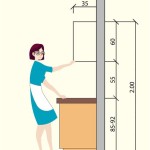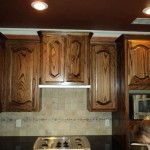How to Clean Plastic Kitchen Cabinets Like a Pro
Keeping plastic kitchen cabinets clean is crucial for maintaining a hygienic and visually appealing kitchen. While they may seem durable, plastic cabinets can easily accumulate dirt, grease, and stains, making them look dull and unkempt. Here's a comprehensive guide to help you clean plastic kitchen cabinets effectively and effortlessly.
Step 1: Gather Essential Tools and Supplies
Before you begin cleaning, assemble the necessary tools and supplies:
- Mild dish soap
- Warm water
- Micofiber cloths or sponges
- Baking soda (optional)
- White vinegar (optional)
- Plastic cleaner (optional)
Step 2: Remove Loose Debris
Start by removing any loose debris from the cabinets using a dry microfiber cloth or a soft brush. This will prevent dirt from spreading and scratching the surface during cleaning.
Step 3: Create a Cleaning Solution
In a bucket or bowl, mix a few drops of mild dish soap with warm water. Stir until you create a slightly bubbly solution. Alternatively, you can use a pre-made plastic cleaner according to the manufacturer's instructions.
Step 4: Clean the Cabinet Surfaces
Dip a microfiber cloth or sponge into the cleaning solution and wring out any excess liquid. Gently wipe down the cabinet surfaces, paying attention to areas that accumulate grease or food residue. Avoid using abrasive sponges or scrubbers, as these can scratch the plastic.
Step 5: Tackle Tough Stains (Optional)
For stubborn stains, you may need to apply baking soda or white vinegar. Make a paste by mixing baking soda with a small amount of water. Apply the paste to the stain and let it sit for a few minutes. Rinse the area with warm water and wipe it dry.
Alternatively, you can dilute white vinegar with equal parts water and spray it onto the stain. Let it sit for a few minutes before wiping it down with a damp cloth.
Step 6: Dry the Cabinets
Once the cabinets are clean, use a dry microfiber cloth to wipe them down thoroughly. This will prevent water spots from forming and leave your cabinets sparkling clean.
Step 7: Polish (Optional)
To add an extra touch of shine, you can use a commercial plastic polish or make your own by mixing equal parts olive oil and lemon juice. Apply a thin layer of the polish to the cabinets and buff them with a clean microfiber cloth until they gleam.
Tips for Maintaining Plastic Kitchen Cabinets
- Clean spills and splatters immediately to prevent stains from setting in.
- Avoid using harsh chemicals or cleaners that contain bleach, as these can damage the plastic.
- Dust the cabinets regularly to prevent dirt buildup.
- If your cabinets have textured surfaces, use a soft brush or a vacuum cleaner with a soft brush attachment to clean them.
- Consider using a plastic protector or sealant to help prevent scratches and stains.
By following these steps and tips, you can keep your plastic kitchen cabinets looking their best for years to come.

3 Ways To Clean Laminate Cabinets Wikihow

3 Ways To Clean Laminate Cabinets Wikihow

Tips To Clean Laminate Surfaces And Maintenance Ideas

3 Ways To Clean Laminate Cabinets Wikihow

How To Clean Kitchen Cabinets 9 Basics Bob Vila

How To Deep Clean Kitchen Cabinets And Keep Them Looking Gorgeous Everyday Skate

A Guide To Modern Pvc Kitchen Cabinets And

How To Clean Kitchen Cabinets 9 Basics Bob Vila

Laminate Veneer Cabinetry Cleaning And Maintenance Tips Bath Plus Kitchen

Laminate Kitchen Cabinets Pictures Options Tips Ideas
Related Posts








